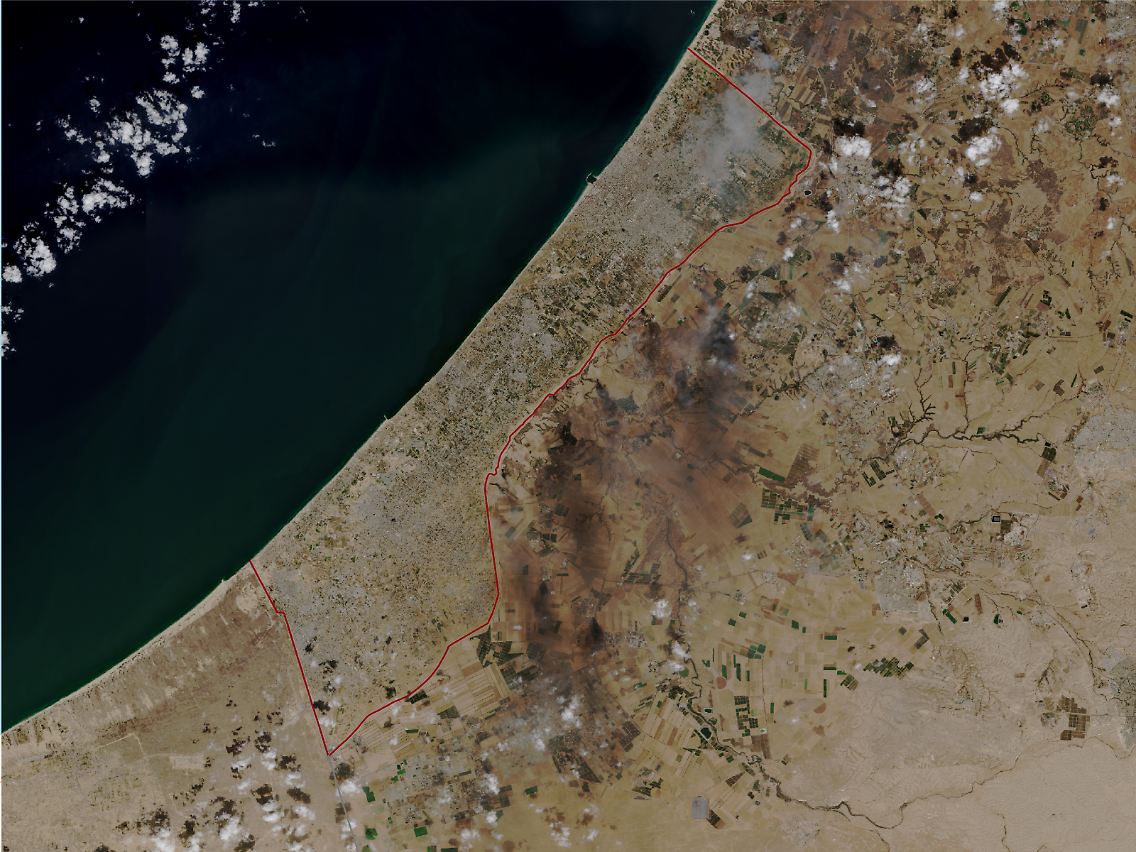Densely populated conflict zone
Why the Gaza Strip is like a powder keg
By Martin Morcinek
October 9, 2023, 2:16 p.m
Listen to article
This audio version was artificially generated. More info | Send feedback
Sandwiched between the Negev Desert and the Mediterranean Sea, a narrow, densely built-up coastal area stretches out in the southwest of Israel: 2.3 million people live here, sealed off from the outside world, under the rule of radical Islamists. How big is the Gaza Strip?
The existence of the Gaza Strip is closely linked to Israel’s history and the development of the Middle East conflict. After the founding of the state of Israel in 1948, the failed UN partition plan for Palestine and the subsequent attack by neighboring Arab states, the Palestinian part of the population in the region was left with two main settlement areas: the West Bank with towns such as Ramallah and Hebron in the east, and the narrow one Coastal strip on the Mediterranean, named after the Palestinian metropolis of Gaza located there.
The Gaza Strip – the starting point of the most recent attacks on Israel – is around 40 kilometers long along the coastline and almost six kilometers wide at its narrowest point. In the densely built-up area on the barren coast, around 2.3 million people live in a very small space, partly in decades-old refugee camps and partly in cities characterized by multi-story concrete buildings such as Rafah, Khan Yunis and Gaza City.
With an area of 360 square kilometers, the Gaza Strip is less than half the size of Hamburg. The area had previously been almost completely cordoned off on all sides. Entry by sea was not possible. Israeli barriers stretch from the coast over a length of around 60 kilometers through the hilly hinterland. There are only a few regular border crossings. The border line with security strips, barriers, barbed wire and observation posts can still be clearly seen even in images from space.
In the southwest, the Gaza Strip borders Egypt and the inhospitable desert zones of the Sinai Peninsula at a width of almost 13 kilometers. The most important border crossing at Rafah is strictly controlled by the Egyptian authorities. Food, spare parts and everyday goods reach the Gaza Strip by truck. Fruit and vegetables are grown on every available piece of land.
View from space: The Gaza Strip on the day of the major attack around midday on October 7th (the course of the border fence highlighted).
(Photo: ntv.de data / ESA, Sentinel Hub)
When the radical Islamist Hamas came to power in 2006, the situation worsened: Since then, the Gaza Strip has been practically completely sealed off from the Israeli side and the population is isolated. The Israeli army is trying to stop the flourishing smuggling of weapons and explosives by deliberately destroying makeshift tunnels.
Hamas militias were already using the Gaza Strip as a retreat and cover before last Saturday’s attack – and on several occasions for isolated attacks with volleys of unguided rockets fired from the Gaza Strip towards Israel.
Since June 2007, access to the Gaza Strip from the Israeli side via the Erez border crossing has been severely restricted. “Passenger traffic to and from Israel will only be permitted if there is a special Israeli permit,” said the Foreign Office, describing the situation before the start of the latest escalation. “The supply situation in the Gaza Strip is difficult,” it continued.
“The public electricity supply is limited to a few hours a day. The groundwater is considered contaminated. Fuel shortages also affect other public services, such as sewage treatment plants.” Public infrastructure, such as roads, electricity and sewage supplies, has been damaged by several outbreaks of violence and conflicts in recent years.
The latest major attack by the Hamas Islamists further complicates the humanitarian situation in the Gaza Strip: The radical Islamic movement denies Israel’s right to exist and uncompromisingly wants to recapture “every square meter of Palestine” with military force. The Hamas movement has always been close to the Iranian regime and the idea of a strictly religious theocracy. The brutal attack on Israeli settlements near the border threatens to trigger a new spiral of violence. Just a few hours after the attacks began, the Israeli military responded with massive air strikes against Hamas targets in the Gaza Strip.
The renewed outbreak of heavy fighting is having a direct impact on the population in the Gaza Strip: the Palestinian authorities speak of at least 558 dead and more than 2,800 injured. A total of 123,538 of the 2.3 million residents had to leave their homes “out of fear, concern for their protection and because of the destruction of their homes,” the UN Office for Humanitarian Affairs (OCHA) said at the beginning of the week. More than 73,000 refugees were accommodated in schools for a short time. Israel is in a state of war, the Israeli military is deploying tanks, guns and tens of thousands of soldiers along the borders.
